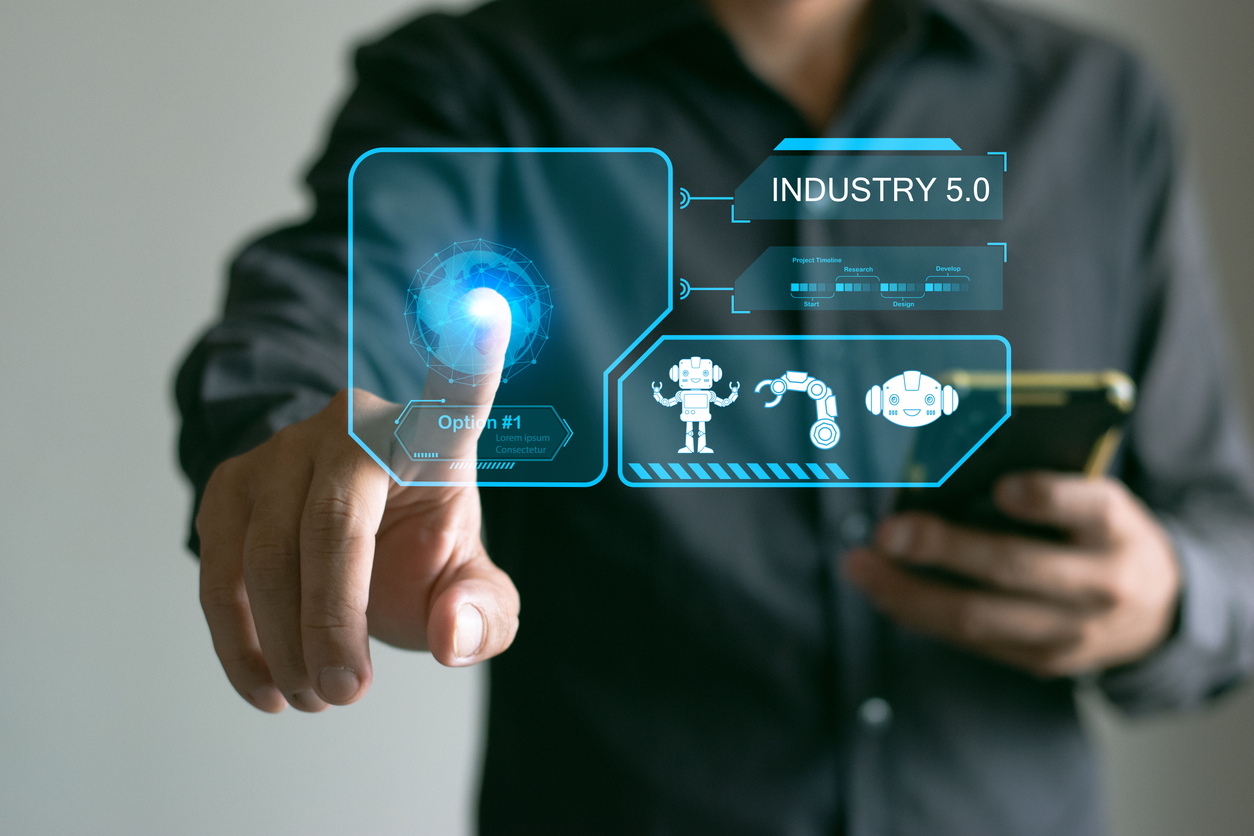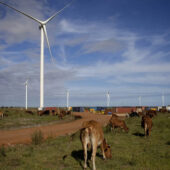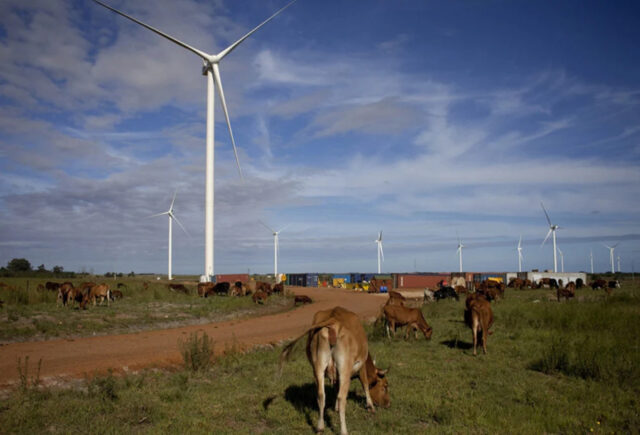The idea of a ‘smart social factory’ of the future – what some call ‘Industry 5.0’ – is gaining momentum in different and surprising ways, and will have implications for impact investors.

In brief
- Industry 5.0 implies human-centric approaches to manufacturing, with strong connections to green manufacturing, circularity and industrial upscaling.
- But some impact investors worry a company’s core business and key social issues may not always be properly aligned.
- Others point to waste prevention and investment in industrial upscaling as highlights of Industry 5.0.
Historical wisdom has it that the original (First) Industrial Revolution took place between 1760 and 1840, when hand-crafted production steamed into the machine-age. Later developments in electricity sparked further industrial innovation and greater labour mobility, stimulating a Second Industrial Revolution.
With the emergence of increasingly powerful computers, information and communication technology in the late 20th century, a Third Industrial Revolution (variously called Industry 3.0) pushed production into the digital age. From then, the semantics really start to blur.
Distinctions between Industry 3.0 and its successor started emerging around 2010 thanks to advances in big data, cloud computing, additive manufacturing (3D printing), and the so-called industrial internet of (connected) things. This made real-time data collection, greater interoperability, flexible prototyping, and smart applications all possible.
But the missing link in this evolutionary tale is, ironically, very human. Today, talk of Industry 5.0 implies human-centric approaches to manufacturing, with strong connections to green manufacturing, circularity, as well as industrial upscaling.
“Where Industry 4.0 focused on technologies such as the internet of things and big data, Industry 5.0 seeks to add human, environmental and social aspects back into the equation,” notes TWI Global, an engineering consultancy.
According to the European Union (EU), the benefits of this approach are not purely self-serving for industry, they also extend to the environment, workers and society at large: “It is good for our planet as it favours circular production models and support(s) technologies that make the use of natural resources more efficient.”
“Powerful levers”
Is this sounding like a ripe area for impact investors? Yes, but it depends on who you ask or at least how you ask it.
Large companies – through their foundations and impact investment funds – can be “powerful levers” addressing today’s societal challenges, providing they meet certain “resource and alignment” conditions, according to the European Venture Philanthropy Association’s (EVPA) back to business series.
EVPA raises some thorny questions on the role of social innovation as a driver of strategic transformation in industry. Do the resources invested properly align with the company’s core business and the social issues at hand? And are these instruments able to act as true labs for social innovation, making industries more inclusive, respectful of human rights, gender balanced, etc.?
‘Everyone is wasting’
Michael Rada, president of IBCSD LAB and founder of INDUSTRY 5.0, leading a global network dedicated to developments in the sector since 2013, sees things very differently. He tells Impact Investor that technology and tools alone won’t resolve today’s social problems. Human endeavour and strategic partnerships are key to tackling not just the vast physical and process waste associated with production, but also waste in the wider sense affecting urban and social settings.
The most important feature of Industry 5.0, he believes, is waste prevention and investing more in industrial upscaling. No matter what industry, “everyone is wasting”, and that means everyone can prevent waste from happening, and thus benefit from green/social transformation.
Here, impact investment means not only pioneering innovations like Australian inventor Robert Tonks’ flameless biochar production technology, but also better capitalising on existing, scalable technologies and markets. He offers as further illustration one of the oldest steel producers in Czechia, Trinecke Zelezarny, which started a new venture implementing Industry 5.0 principles throughout the entire supply chain and generated over €100m in savings.
To some industry watchers like Amir Adel, the so-called “smart social factory” of the future goes beyond manufacturing goods for profit (see PubMed Central). Industry 5.0 is seen as heralding a sustainable and resilient post-COVID world where innovators/entrepreneurs can achieve competitive advantage even as green regulations tighten up under the EU’s ‘Fit-for-55’ drive, the climate law which makes reaching the EU’s climate goal of reducing EU emissions by at least 55% by 2030 a legal obligation.
The EU itself is betting big on innovation driving what it calls a “twin digital and green” transformation of industries and economies. It is co-investing €1.15bn in public-private partnerships (PPP) to develop advanced manufacturing solutions for the Factory of the Future.
A number of collaborative robots and mechatronics are coming through the PPP pipeline, according to the European Factories of the Future Research Association. For example, the Sharework initiative shows how human-robot collaboration handles repetitive, dangerous, and physically onerous tasks while reducing health and safety risks, and improving worker satisfaction.
For Sharework’s coordinator, Simona Neri of Eurecat Technology Centre in Catalonia, collaborative robotics are more than industrial tools. They empower workers and boost European industry by opening up shop floors to much greater “gender and diversity inclusion”.
Considerations for impact investors
Industry 5.0’s progress depends on more than financial support. Today, it is hampered by a lack of vision on how it can be applied, a shortage of skilled workers capable of implementing especially the human-machine side of the equation, and the research and investment that underpins any transformation.
Any new solutions also need to take into account safety, security and privacy issues, as well as the industrial regulations concerning smart machines, artificial intelligence, and other digital developments and regulations driving Industry 5.0.
Before rushing into the sector, impact investors should also be sure the company or solution they wish to back is not misrepresenting its Industry 5.0 credentials. Such fakery, Rada argues, undermines progress, which is why he set up a strategic alliance of practitioners with expertise to discuss the validity of the claims being made.
As an industrial upscaling and waste-prevention pioneer, Rada still thinks the strongest and perhaps fastest returns come from investing in improved production, trade (including e-trade), but also the politics of change.
Collaborative robots and technologies are “just tools” in the end, he stresses. Sometimes the biggest hurdle to tangible impact is mental, combined with a lack of urgency to make today’s production and processes more efficient. “Time is the omnipresent waste with a big difference… not a single second wasted can be recovered!”





